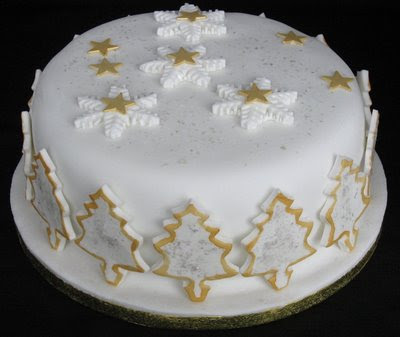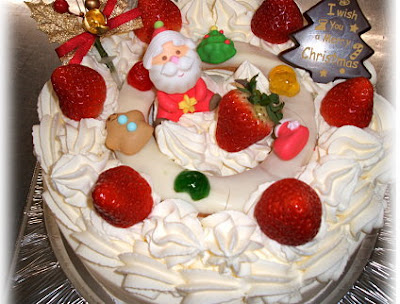Monday, January 31, 2011
Christmas Pillow
Here is a photo of my beautiful pillow my sister-in-law made for me for Christmas. She's very good at making home made gifts and those are the best kind to receive because they were made out of love! Another year she made me a beautiful quilted tree skirt. The picture doesn't do it justice compared to seeing it in front of you. My grandchildren also bought me a Grandma pillow one year that I love. I may leave my pillow out all year long!
Thursday, January 20, 2011
The Salvation Army and Christmas
 |
| General William Booth |
Each year during the Christmas season, we see the red kettles of the Salvation Army and the volunteers ringing the bells to collect donations for needy families, seniors, and the homeless. Money donated helps with Christmas dinners, clothing and toys for those in need. The Salvation Army endeavors to bring spiritual light and love to those it serves at Christmas so that the real meaning of the season is not forgotten.
I was curious to find out how the Salvation Army began and it all started with William Booth, the founder and first General. He was born in Nottingham, England on April 10th, 1829 and died August 20th, 1912. His father was a wealthy man, but made some bad investments that landed the family into poverty. His father then became an alcoholic, had gone bankrupt and could no longer afford his son's school fees. At the age of 13, William was sent to work as an apprentice in a pawnbroker's shop to help support his mother and sisters. This made him aware of the poverty in which people lived and how they were humiliated and degraded because of it. When he was a teen, he became a Christian and spent much of his time trying to persuade others to become Christians.
He spent several years as a Methodist minister but felt that God wanted more from him. He resigned and started preaching to crowds in streets and to the poor and wretched of the good news about Jesus Christ and His love for all men. He had found his destiny and formed his own movement "The Christian Mission". The mission began to grow but not without opposition from some. His wife wrote that he would 'stumble home night after night haggard with fatigue, often his clothes were torn and bloody bandages swathed his head where a stone had struck'. In time people converted, but it wasn't until 1878 when "The Christian Mission" changed it's name to the "Salvation Army" that things began to happen. The idea of an Army fighting sin and Booth's fiery sermons drove the message home and more and more people were able to leave their past behind and start a new life as a soldier in the Salvation Army.
The early years were lean ones, but the Army persevered. In the early 1880s, operations were extended to other countries, notably the United States, France, Switzerland, Sweden and others, including to most of the countries of the British Empire: Australia, Canada, India, South Africa, New Zealand, Jamaica, etc. During his lifetime, he established Army work in 58 countries and colonies, travelling extensively and holding, "salvation meetings."
In 1909 on a motor tour in the United Kingdom, he discovered he was blind in his right eye and the sight in his left eye was dimmed by cataracts. A surgeon at Guy's Hospital removed his right eye. Despite this setback, in 1910 he continued campaigning in Holland, Denmark, Germany, Switzerland and Italy, finally returning to England. He was 83 when he died. At his funeral procession were 10,000 uniformed Salvationists.
Related articles
- Salvation Army reports increased need for food (sfgate.com)
Tuesday, January 18, 2011
Christmas Cakes
I enjoy watching the Cake Boss! He's awesome at what he does! The work that goes into his specialty cakes is unbelievable! Here is a video of the making of an office party Christmas cake. He has made it into gift boxes with all of the accessories. He is so creative...and can you imagine trying to deliver these specialty cakes!!
UPDATE- SORRY...APPARENTLY THIS VIDEO WAS REMOVED BY YOU TUBE .
Found at TV News & Reviews
Cake Boss Cake found at http://jessgiggles.wordpress.com/tag/doglets/
I also found some beautiful Christmas cake photos to share. If any are copyrighted I will gladly remove them. I just thought they were so pretty and wanted to share how creative you can be in making a cake! If you click on the pictures of the cakes, it will take you to the website they were found on. Don't they all look so......SWEET...... ! :)
UPDATE- SORRY...APPARENTLY THIS VIDEO WAS REMOVED BY YOU TUBE .
Found at TV News & Reviews
Cake Boss Cake found at http://jessgiggles.wordpress.com/tag/doglets/
I also found some beautiful Christmas cake photos to share. If any are copyrighted I will gladly remove them. I just thought they were so pretty and wanted to share how creative you can be in making a cake! If you click on the pictures of the cakes, it will take you to the website they were found on. Don't they all look so......SWEET...... ! :)
Related articles
- Cake Boss' Christmas Confession ... (tmz.com)
- "Merry Christmas & Happy New Year!" and related posts (pinkcakebox.com)
- Interflora florists' passion to deliver... (interflora.co.uk)
- http://www.freedsbakery.com/holiday-cakes/christmas-cakes
Saturday, January 8, 2011
Christmas during the Middle Ages
| Protestant lands in blue. Catholic lands in olive. |
http://en.wikipedia.org/wiki/Christmas#Middle_Ages
Related articles
- Nicholas Day is celebrated on December 6th in Germany (lilorealtor.wordpress.com)
Thursday, January 6, 2011
Christmas in the American Civil War
Christmas in the American Civil War (1861–1865) was celebrated in both the United States and the Confederate States of America although the day did not become an official holiday until five years after the war ended. The war continued to rage on Christmas and skirmishes occurred throughout the countryside. Celebrations for both troops and civilians saw significant alteration. Propagandists, such as Thomas Nast, used wartime Christmases to reflect their beliefs. In 1870, Christmas became an official Federal holiday when President Ulysses S. Grant made it so in an attempt to unite north and south.
Soldiers not actively campaigning celebrated Christmas in several ways. Union soldiers would use salt pork and hardtack, which is a simple type of cracker or biscuit, made from flour, water, and sometimes salt. Others were treated to special meals; a captain from Massachusetts treated his soldiers to foods such as turkey, oysters, pies, and apples. However, many soldiers received no special treats or privileges. In one incident on December 25, 1864, 90 Union soldiers from Michigan, led by their captain, dispensed "food and supplies" to poor Georgians, with the mules pulling the carts decorated to resemble reindeer by having tree branches tied to their heads. In some units, celebrating Christmas was not allowed. On December 25, 1862, soldiers of one unit were punished for celebratory gunfire for the holiday, when actually the gunfire was for a funeral salute.
Carols, hymns, and seasonal songs were sung during the period, with some, such as "Deck the Halls", "Oh Come All Ye Faithful", and Mendelssohn's "Hark, the Herald Angels Sing" (1840), still sung today. American musical contributions to the season include "It Came Upon a Midnight Clear" (1850), "Jingle Bells" (1857), "We Three Kings of Orient Are" (1857) and "Up on the Housetop" (1860). Although popular in Europe at the time, Christmas cards were scarce in the United States, and would not enjoy widespread use until the 1870s.
Henry Wadsworth Longfellow wrote his pacifist poem, "Christmas Bells" on Christmas Day 1863 at the news of his son Lieutenant Charles Appleton Longfellow having suffered severe wounds in November during the Mine Run Campaign. The poem was set to the tune "Waltham" by John Baptiste Calkin sometime after 1872 and has since been received into the established library of Christmas carols. The carol does not include two stanzas from the original poem that focused on the war.
For children, Christmas was altered during the war. Presents were fewer, especially in the devastated South. In We Were Marching on Christmas Day, author Kevin Rawlings notes that some southern children worried about the Union blockade, and one little girl, Sallie Brock Putnam, plotted the course Santa Claus would have to take to avoid it. Sometimes fathers on both sides were allowed furlough, and children were said to react to their fathers as if seeing "near strangers". Excuses for a lack of Santa included Yankees having shot him.
http://en.wikipedia.org/wiki/Christmas_in_the_American_Civil_War
Soldiers not actively campaigning celebrated Christmas in several ways. Union soldiers would use salt pork and hardtack, which is a simple type of cracker or biscuit, made from flour, water, and sometimes salt. Others were treated to special meals; a captain from Massachusetts treated his soldiers to foods such as turkey, oysters, pies, and apples. However, many soldiers received no special treats or privileges. In one incident on December 25, 1864, 90 Union soldiers from Michigan, led by their captain, dispensed "food and supplies" to poor Georgians, with the mules pulling the carts decorated to resemble reindeer by having tree branches tied to their heads. In some units, celebrating Christmas was not allowed. On December 25, 1862, soldiers of one unit were punished for celebratory gunfire for the holiday, when actually the gunfire was for a funeral salute.
Carols, hymns, and seasonal songs were sung during the period, with some, such as "Deck the Halls", "Oh Come All Ye Faithful", and Mendelssohn's "Hark, the Herald Angels Sing" (1840), still sung today. American musical contributions to the season include "It Came Upon a Midnight Clear" (1850), "Jingle Bells" (1857), "We Three Kings of Orient Are" (1857) and "Up on the Housetop" (1860). Although popular in Europe at the time, Christmas cards were scarce in the United States, and would not enjoy widespread use until the 1870s.
Henry Wadsworth Longfellow wrote his pacifist poem, "Christmas Bells" on Christmas Day 1863 at the news of his son Lieutenant Charles Appleton Longfellow having suffered severe wounds in November during the Mine Run Campaign. The poem was set to the tune "Waltham" by John Baptiste Calkin sometime after 1872 and has since been received into the established library of Christmas carols. The carol does not include two stanzas from the original poem that focused on the war.
For children, Christmas was altered during the war. Presents were fewer, especially in the devastated South. In We Were Marching on Christmas Day, author Kevin Rawlings notes that some southern children worried about the Union blockade, and one little girl, Sallie Brock Putnam, plotted the course Santa Claus would have to take to avoid it. Sometimes fathers on both sides were allowed furlough, and children were said to react to their fathers as if seeing "near strangers". Excuses for a lack of Santa included Yankees having shot him.
http://en.wikipedia.org/wiki/Christmas_in_the_American_Civil_War
 |
| Santa distributes gifts to Union troops. Nast's 1st Santa cartoon, 1863. |
 |
| A silk greeting card. 1860 |
 |
| A husband and family separated by war. 1862 |
 |
| The lyrics of this beloved carol date back to the American Civil War. |
Related articles
- Christmas Bells (marybiever.wordpress.com)
Saturday, January 1, 2011
North Point's iBand
Subscribe to:
Comments (Atom)
Followers
Feedjit
About Me
Popular Posts
-
It's my favorite time of the year to watch QVC's Christmas in July show. They have so many cool things for Christmas. I like the f...
-
Image credit, Royce Bair , from The Stock Solution . I thought this was such a cheery cupcake Christmas tree! What a great idea. Royce Bair...
-
Here are some crafty ideas for using pinecones in your Christmas decorating. All of these are from http://www.marthastewart.com . There are...
-
I decided to check out more antique christmas tree stands and found a few Google Images. I love to look at the old tree stands. It's ju...
-
Personalize funny videos and birthday eCards at JibJab! Decided to have a little fun today with Jib Jab! In this video is my hubby, Bruce, ...
-
There is a wide range of tattoo designs available, and I strongly recommend that you run as many top quality work of art as poss...
-
I've decided to post pic's of my Easter tree even though it's on my Christmas blog. I don't do very much in the way of Easte...
-
This is a beautiful version of Silent Night. B.E. Taylor has made it his own. He's from our area, Aliquippa, Pa. It began in 1994, with ...




























